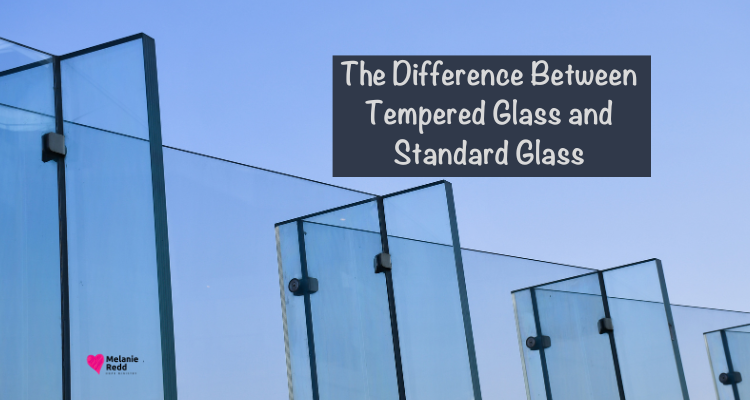The Difference Between Tempered Glass and Standard Glass

The Difference Between Tempered Glass and Standard Glass
When choosing materials for construction or renovation, one critical decision is selecting the right type of glass. Whether you’re designing a modern office space or renovating your home, understanding the differences between tempered glass and standard glass is essential for making an informed decision.
While both types of glass have their applications, tempered glass offers distinct advantages in terms of strength, safety, and durability.
Truly, a reputable tempered glass manufacturer can provide high-quality products that meet the unique needs of your project. This blog will explore the differences between tempered and standard glass. Also, we will give insights into their manufacturing processes and applications.
Comparing Strength and Durability: Tempered vs. Standard Glass
The most significant difference between tempered glass and standard glass lies in its strength and durability. Standard glass, also known as annealed glass, is the most common type used in everyday applications.
However, it is much more fragile compared to tempered glass. Standard glass can easily crack or shatter upon impact. Thus, this makes it less ideal for high-traffic areas or environments that demand extra durability.
Tempered glass, on the other hand, is up to five times stronger than standard glass. It undergoes a special heat-treatment process that strengthens the glass and increases its resistance to impact and pressure. This makes tempered glass a preferred choice for areas where safety and durability are paramount, such as windows, doors, shower enclosures, and office partitions.
Tempered glass is not only stronger but also more resistant to thermal stress. In environments where temperatures fluctuate dramatically, tempered glass maintains its structural integrity, whereas standard glass is more prone to cracking or breaking under thermal pressure.
Why Tempered Glass is Safer for Homes and Offices
One of the key reasons many architects and homeowners choose tempered glass is its superior safety features. Standard glass, when broken, shatters into large, sharp shards that can cause serious injuries. This is a particular concern in homes, offices, and public spaces where people are more likely to come into contact with broken glass.
Tempered glass, in contrast, is designed to shatter into small, blunt pieces upon impact. These tiny fragments are far less likely to cause injury, making tempered glass a much safer option for homes, offices, and other environments where safety is a top priority. This makes it especially important for areas like bathrooms, kitchens, and high-traffic spaces where the risk of accidents is higher.
In offices, tempered glass can be used for glass partitions and doors, ensuring both an open, modern look and increased safety. Homes with children or pets can also benefit from the added security of tempered glass in windows, doors, and shower enclosures. The peace of mind that comes with knowing that your space is equipped with safer glass solutions is invaluable.
Understanding the Manufacturing Process of Tempered Glass
The manufacturing process of tempered glass is what gives it its unique strength and safety properties. While both standard and tempered glass start as annealed glass, tempered glass goes through an additional process called thermal tempering.
During the tempering process, the glass is heated to approximately 620°C (1,148°F) and then rapidly cooled using high-pressure air blasts. This rapid cooling process, known as quenching, strengthens the glass by creating a layer of compression on the surface while the center remains in tension. This makes the glass much more resistant to impact and pressure.
Standard glass, by contrast, is simply cooled at a slower rate after being formed, leaving it more vulnerable to breakage under stress. The thermal tempering process not only improves the durability of tempered glass but also alters its breakage pattern. When broken, tempered glass disintegrates into small, harmless pieces rather than large, dangerous shards.
The manufacturing process is key to why tempered glass is more expensive than standard glass. However, the long-term benefits of improved safety, strength, and durability often justify the higher upfront cost, especially in environments that demand extra protection.
Choosing the Right Type of Glass for Your Project
When deciding between tempered glass and standard glass for your project, several factors come into play. While standard glass is less expensive and sufficient for some applications, tempered glass is the better option for areas that require added safety, strength, and thermal resistance.
If your project involves high-traffic areas, such as commercial buildings, public spaces, or homes with children, tempered glass should be a top consideration. Its ability to withstand impact, temperature changes, and everyday wear and tear makes it a versatile and durable choice for a wide range of applications.
Tempered glass is ideal for:
- Windows in homes and offices, especially in areas prone to extreme weather or temperature fluctuations
- Glass doors and partitions in modern office spaces
- Shower enclosures and bathroom mirrors for enhanced safety and durability
- Balcony and stair railings for strength and a sleek, modern aesthetic
- Glass tables and countertops where impact resistance is essential
Standard glass, while more fragile, can still be a suitable choice for lower-risk applications such as picture frames, cabinet doors, and some decorative elements. However, if safety, durability, and longevity are important, tempered glass is the preferred choice.
Closing Thoughts
In conclusion, while both tempered and standard glass have their uses, tempered glass stands out as the superior option for areas that require increased safety, strength, and durability. Its unique manufacturing process not only enhances its resilience but also makes it a safer alternative in the event of breakage.
By working with a trusted tempered glass manufacturer, you can ensure that your project benefits from high-quality materials that meet all your design and safety needs. Whether for residential or commercial spaces, tempered glass provides long-lasting, reliable solutions that make a significant impact on both the functionality and aesthetics of your environment.
Were you encouraged by what you read?
Then, would you share this article with a friend, co-worker, or family member?
Or, maybe you can send it to a friend or family member?
This blog occasionally uses affiliate links and may contain affiliate links.
Additionally, Melanie Redd is a participant in the Amazon Services LLC Associates Program.
This is an affiliate advertising program designed to provide a means for sites to earn advertising fees. These are earned by advertising and linking to amazon.com.
Also, for more on my disclosure policy, click HERE.
© Melanie Redd and Hope Ministry, 2024. Unauthorized use and/or duplication of this material without express and written permission from this blog’s author and/or owner is strictly prohibited.
Further, excerpts and links may be used, provided that full and clear credit is given to Melanie Redd and Hope Ministry.
Please give appropriate and specific directions to the original content.




0 Comments